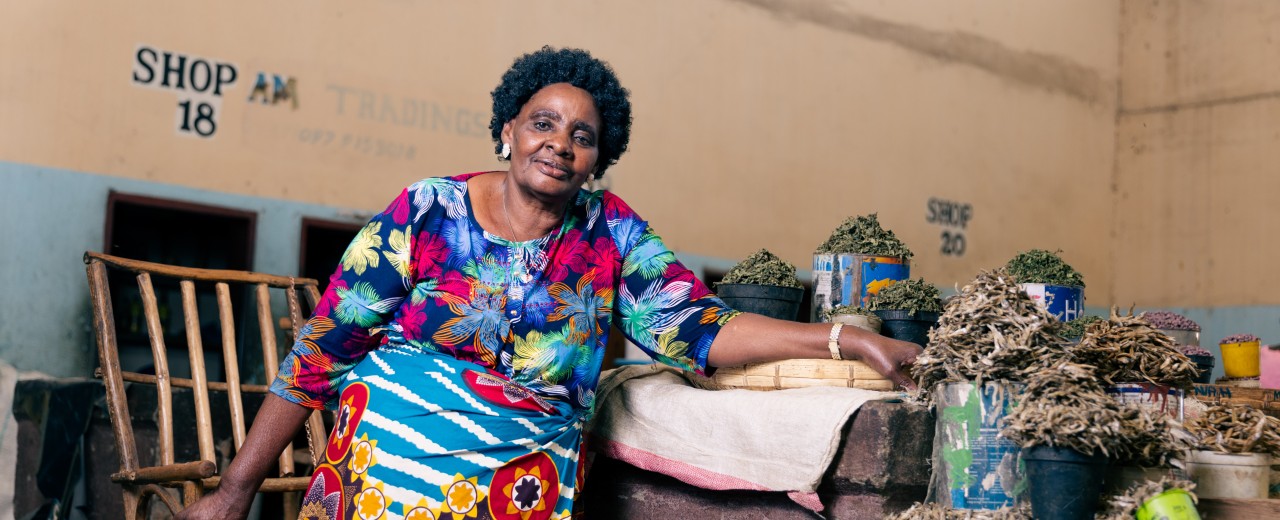Tip: Activate javascript to be able to use all functions of our website

Zambia is one of the countries with the highest levels of poverty and inequality in the world. In 2022, 60% of the population were considered as extremely poor, and in rural areas the proportion was 75%. The country is currently suffering from an extreme drought, as always in the dry season between March and November, but exacerbated by climate change. The soil is parched, hard and cracked; the Zambezi carries less than half a metre of water and the world-famous Victoria Falls are also almost dry (September 2024). Crops are withering, food is scarce and the municipal waterworks are struggling to supply people with water. In rural regions, 60% of the population live on less than two dollars a day - as a result, children and breastfeeding mothers in particular are at risk of malnutrition.
To alleviate the hardship, social benefits are paid out from a World Bank fund. On behalf of the German Federal Ministry for Economic Cooperation and Development (BMZ), KfW contributes almost EUR 20 million to this fund together with other donors. So far, more than one million households have benefited from this, half of the poor in Zambia, especially single mothers. In the form of an unconditional basic income, the money is used to cover daily needs and enable children to attend school. Every two months, they receive 200 Zambian kwacha, which is around 7 euros. And this buzzer makes a big difference: instead of getting by on one meal a day, families can now eat their fill twice, women can put money aside and, for example, buy farm animals or open a small business. This not only makes the women more self-confident, it also enables them to earn a sustainable income and thus find a way out of poverty for themselves and their children. So far, 1.3 million households in the country have benefited from the transfer payments.
Part of the World Bank programme is ‘Keeping Girls in School’ (KGS): School scholarships enable girls to attend school. More than 130,000 girls in the country have received scholarships, enabling them to (re)enter secondary school. More than 430 young women who have completed secondary school have also received a scholarship to study at university.
Here are two examples - Ruth Monga, who was able to invest in her market stall, and sixteen-year-old schoolgirl Elina Onety.

Ruth Moonga (59 years old) was able to get a loan, which she invested in sardines and beans - for 3000 kwacha. Previously she could only buy the goods in tins, but now she has been able to significantly increase her income thanks to the more favourable "bulk purchase". She was able to extend her two-room house and add three rooms, as well as install a toilet. And now she has running water and electricity. A huge relief for the whole family. One of her daughters has finished secondary school and has applied for a place at university - that gives her hope for the future!
At Zimba High School in Zimba (Southern Province of Zambia), 116 girls take part in this programme. They live in a boarding school, for which school fees of 3000 kwacha are charged annually - costs that are covered by the KGS programme. In addition, the pupils receive 600 kwacha a year for books, toiletries, food and clothing.

Elina says: ‘I used to only have one blouse and one skirt - now I have three blouses, three skirts and several pairs of socks. I'm so happy to be going back to school.’
Share page
To share the content of this page with your network, click on one of the icons below.
Note on data protection: When you share content, your personal data is transferred to the selected network.
Data protection
Alternatively, you can also copy the short link: https://www.kfw-entwicklungsbank.de/s/enzB2dfp
Copy link Link copied